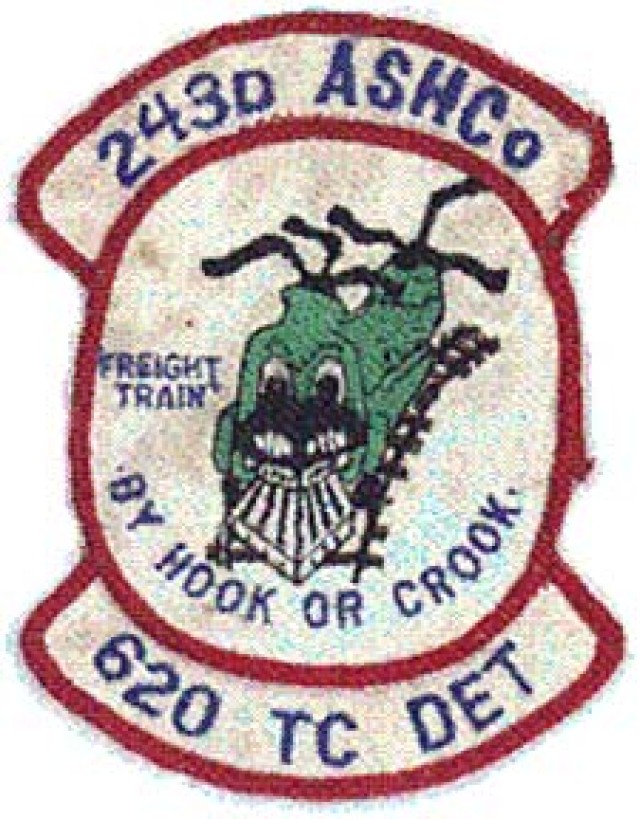COB Adder, Iraq - The image of massive locomotives is not a stretch to imagine in comparing them to the incredible flying machines known as Chinooks.
The CH-47 Chinook cargo helicopter may look a bit strange and ungainly to those unfamiliar with aviation, but its true value is demonstrated by the Soldiers of Company B, 5th Battalion, 159th Aviation Regiment, appropriately named Task Force Freight Train.
This unit, which is scheduled to leave Iraq in late August, didn't just gain their call sign from similarities to 19th Century trains; they have a much more unique story that goes as far back as Vietnam to the original Freight Trainers of the 243rd Assault Support Helicopter Company.
"In 1968, in Vietnam, over the Ninh Hoa Valley, Freight Train 053 was shot down with all 5 crew on October 20. They were declared MIA (missing in action), then KIA (killed in action), but were never recovered," said Maj. Aaron Smith, commander of the current TF Freight Train and native of Mitchellville, Md.
It wasn't until 1996 that the first bit of the wrecked aircraft was discovered by two Vietnamese farmers, leading to an excavation and subsequent positive identification of the 5 crewmembers during the next five years.
Their Chinook helicopter was lost on October 20, 1968, on a resupply mission to Buan Me Thout in the Central Highlands of South Vietnam according to an article published in the Honolulu Star-Bulletin, May 25, 2001.
The aircraft had been carrying medical supplies, ammunition and other equipment. The commander had planned to follow a valley road to the Vietnamese city where Americans were under siege.
The weather turned bad, and at 7 a.m., the crew radioed that it was over Ninh Hoa Valley and was proceeding to Ban Me Thout. It was their last radio transmission.
A search started but halted eight days later.
In March 1994, the tail of the helicopter with an identifying aircraft number had been recovered, but through the years, most of the aircraft, which had burned on landing, had been scavenged or washed down the hillside. Excavation of the site did not start until a year later.
Anthropologists and other experts worked for two weeks at the mountainous site sifting through the dirt.
Seventy possible bone fragments and five teeth were recovered, but it took six years and DNA technology for forensic experts at the Army Central Identification Laboratory at Hickam Air Force Base, Honolulu, Hawaii, to come up with a final answer.
It was not until sufficient refinement of DNA processing techniques occurred in the late 1990s and early 2000 that JTF personnel were able to identify the crew.
Although the aviation unit returned to the United States from Vietnam in 1972, the men from the 243rd never forgot about their comrades. On July 23, the unit's final mission was completed when the remains of their fellow Soldiers were repatriated and interned on U.S soil.
Sixty-five former members of the 243rd, friends, and family members of the deceased were in attendance to pay their respects. Funeral services for the crew of Freight Train 053 took place at Arlington National Cemetery on May 24 and 25, 2001.
Immediately following the group service, a service was held for Henry Knight.
Graveside services included a "Missing Man" formation fly-over by four CH-47D Chinook helicopters from the Army Reserve, located at Ft. Eustis, Va.
Smith said that many of the original members of the unit showed up for their departure ceremony, and it was then they were officially given the patch.
"We have a very close relationship with those folks," Smith said, of the bond between his unit, and those who were the original 'Ole Freight Trainers and their families.
"Our unit spent two days with the families and prior members (of the unit), of which the captain at the time is now a retired one-star general and with the Oklahoma National Guard Bureau, Brig. Gen. (Ret.) Pete Costilow. They all came down to Fort Belvoir to meet the crews. Those family members, grand kids and all those folks from the original unit spent the day with our folks at the aircraft. That started a bond that, to this day, we still keep in touch with many of the folks from the original Freight Trainers."
It was through this bond the Freight Train call sign was passed from one generation to the next.
"In Jan. 2003, when B Company was given activation orders for Operation Enduring Freedom and subsequently Operation Iraqi Freedom, we still had no official call sign and name," Smith said. "Since the original call sign was retired by DA (Department of the Army) in 1995, we asked if, because of our new relationship with them, they'd be willing for us to adopt the Freight Train call sign.
This was the first time the missing man formation had been accomplished by CH-47 helicopters over Arlington Cemetery.
Now, the 243rd rests atop their shoulders on the Chinook that connects the two units over decades of service. Even Costilow who once commanded the mighty Freight Train, was present at the ceremony to pass this little piece of history on to new caretakers.






Social Sharing